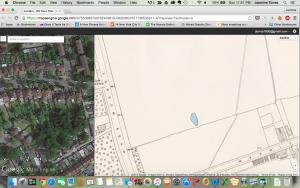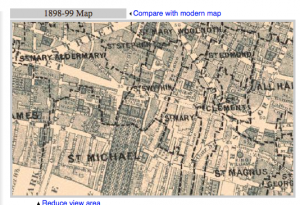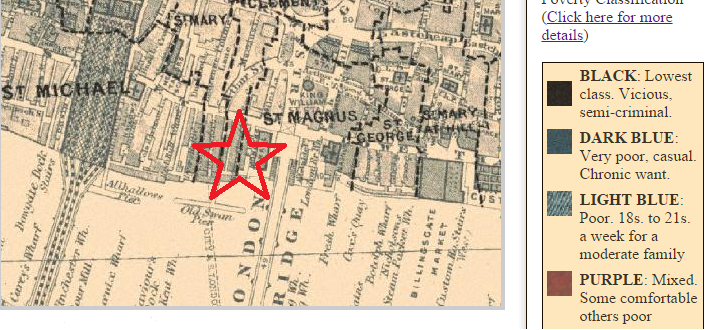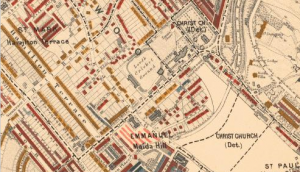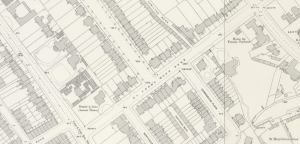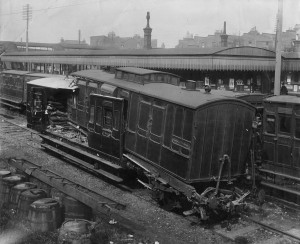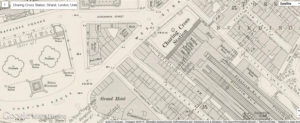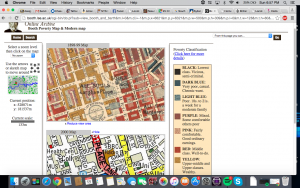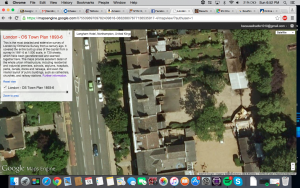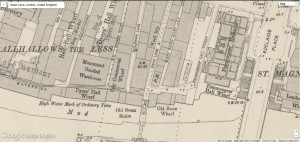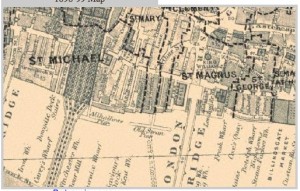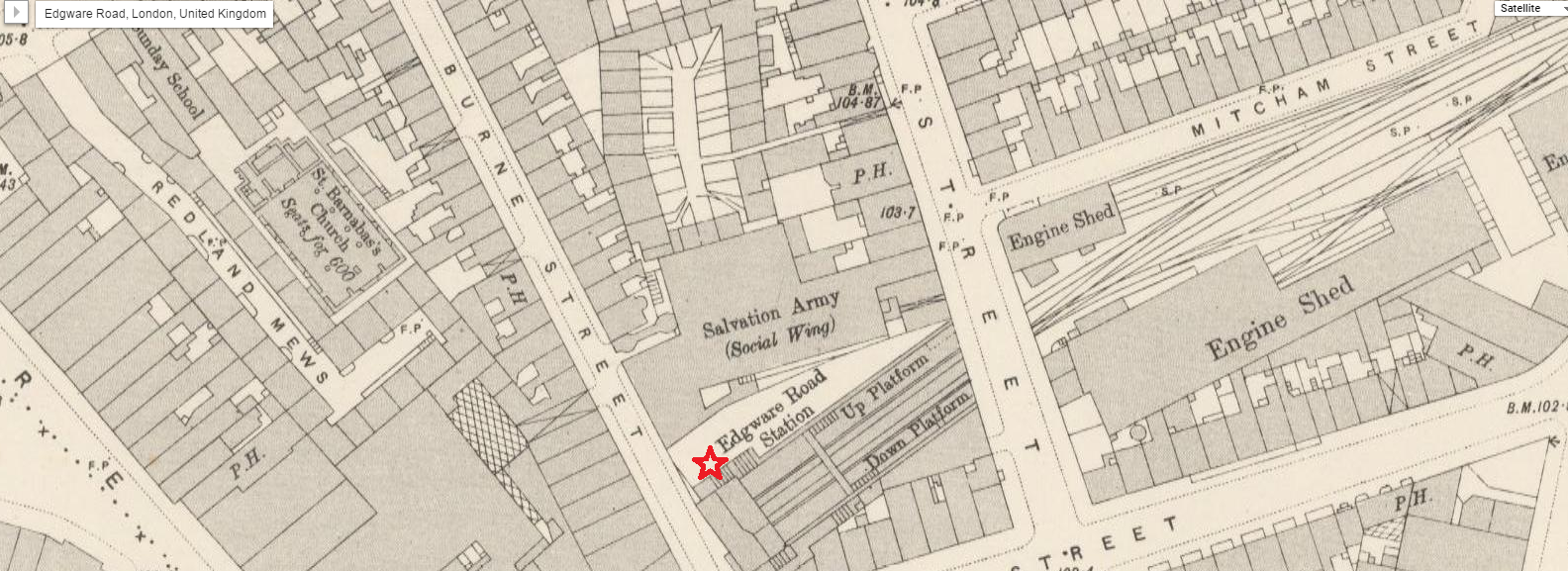
Edgware Road, London, is the location of the illusory St. Monica’s Church in a short story entitled “Adventures of Sherlock Holmes: Scandal in Bohemia” (“Scandal in Bohemia”, 8). Written by Sir Arthur Conan Doyle, Holmes is best known for his keen capacity to think logically, his perceptive ability to use forensic science, and his astute aptitude to alter his persona and then swiftly adapt to any disguise. And, true to his character’s persona, while dressed as a drunken out of work groom Holmes finds himself being haphazardly pulled into St. Monica’s Church a fictional church, to bear witness in the marriage of retired American opera singer Irene Adler and the handsome London lawyer Godfrey Norton.
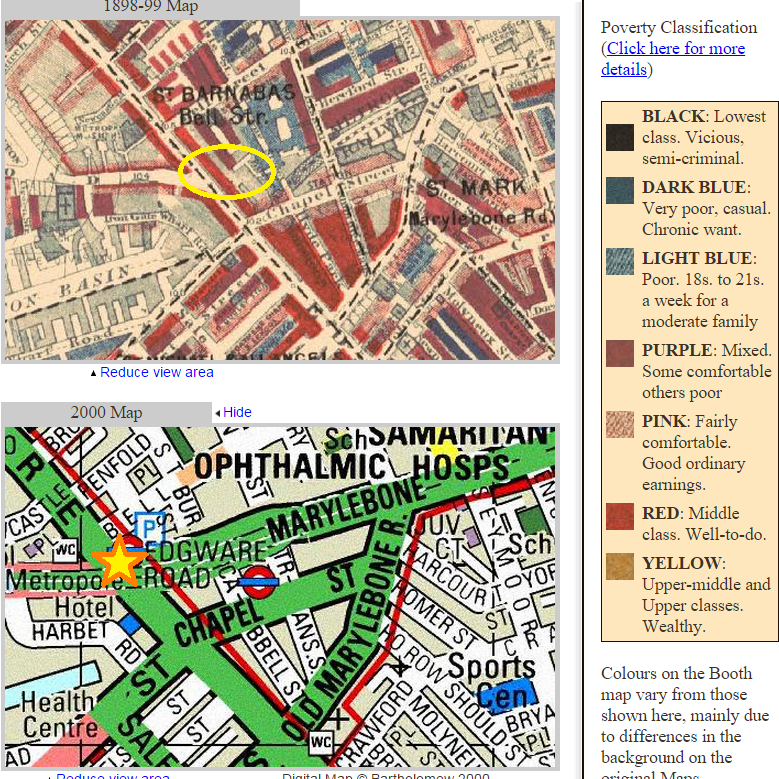
According to Google Maps, Edgware Road is called Edgware Road Station and is located off Burne Street, in the East end of London, where the Salvation Army “Social Wing” is located. The surrounding area of Edgware Road consists of middle-class people who live on the fringes of society. These classes are both “mixed” and “poor,” as indicated by the red, purple and light blue indicators, according to “Charles Booth Online Archive: Booth Poverty Map and Modern Map.” According to the Victorian Web in the article “The Origin and Early Development of the Salvation Army in Victorian England”, the Social Wing of the Salvation Army, founded by William Booth, primarily concerned itself with both religious and social causes in an attempt to improve the lives of the poor souls living in poverty in the slums of London(The Victorian Web). The Methodist soldiers within god’s army targeted the poor in London’s East End. In a highly sophisticated militaristic style and through the emphasis of prayer, Salvation Army members sought to redeem the downtrodden by providing nourishing meals and thus redeem them from damnation. Events took place in streets, the homes of members and in churches.
Regarding the story, Edgware Road identifies two important themes that involve: distorting class structure and woman as powerful, intelligent and clever agents of change despite their social class. The importance of the Social Wing is emphasized through the different class structures around Edgware Road. This highlights two instances within the context of the story in which class structure is blurred. In the first instance, the astute Holmes points out that Irene and the King of Bohemia, who had a romantic liaison are on “very different level[s]” (“Scandal In Bohemia”,14). Furthermore, Holmes indicates that although the King of Bohemia is of a higher social class, Irene has the greater intellectual ability and, therefore, is superior to the King, who idealizes her for her cleverness. Holmes expounds upon the theory that a woman, regardless of her social standing, may be more resourceful and, therefore, more cunning than a man. In the second instance, Holmes refuses to take the King’s priceless ring and upon doing so turns his back towards the King, indicating a distortion in social classes. To Holmes, the status of the King or any other client is less significant than the captivating problem they present to him.
Edgware Road is an important location in the story entitled “Scandal in Bohemia” since it identifies St. Monica’s Church as the place where Irene Alder seeks solace and becomes an “honorable woman”. Irene knows having engaged in an affair with a man without the benefit of marriage is immoral. And, although she believes only the divine one knows the truth, she stealthily attempts to protect her image from social condemnation. She is a direct nemesis of the King of Bohemia.
Works Cited
Doyle, Arthur. “Sherlock Holmes and the Scandal in Bohemia.” 1 June 1891. Print.
“Booth Poverty Map & Modern Map (Charles Booth Online Archive).” Booth Poverty Map & Modern Map (Charles Booth Online Archive). Web. 19 Oct. 2015.
Dr Diniejko, Andrzej. “The Origin and Early Development of the Salvation Army in Victorian England.” The Origin and Early Development of the Salvation Army in Victorian England. 10 Apr. 2013. Web. 19 Oct. 2015.
“Google Maps Engine: Map View.” Google Maps Engine: Map View. Web. 19 Oct. 2015.

